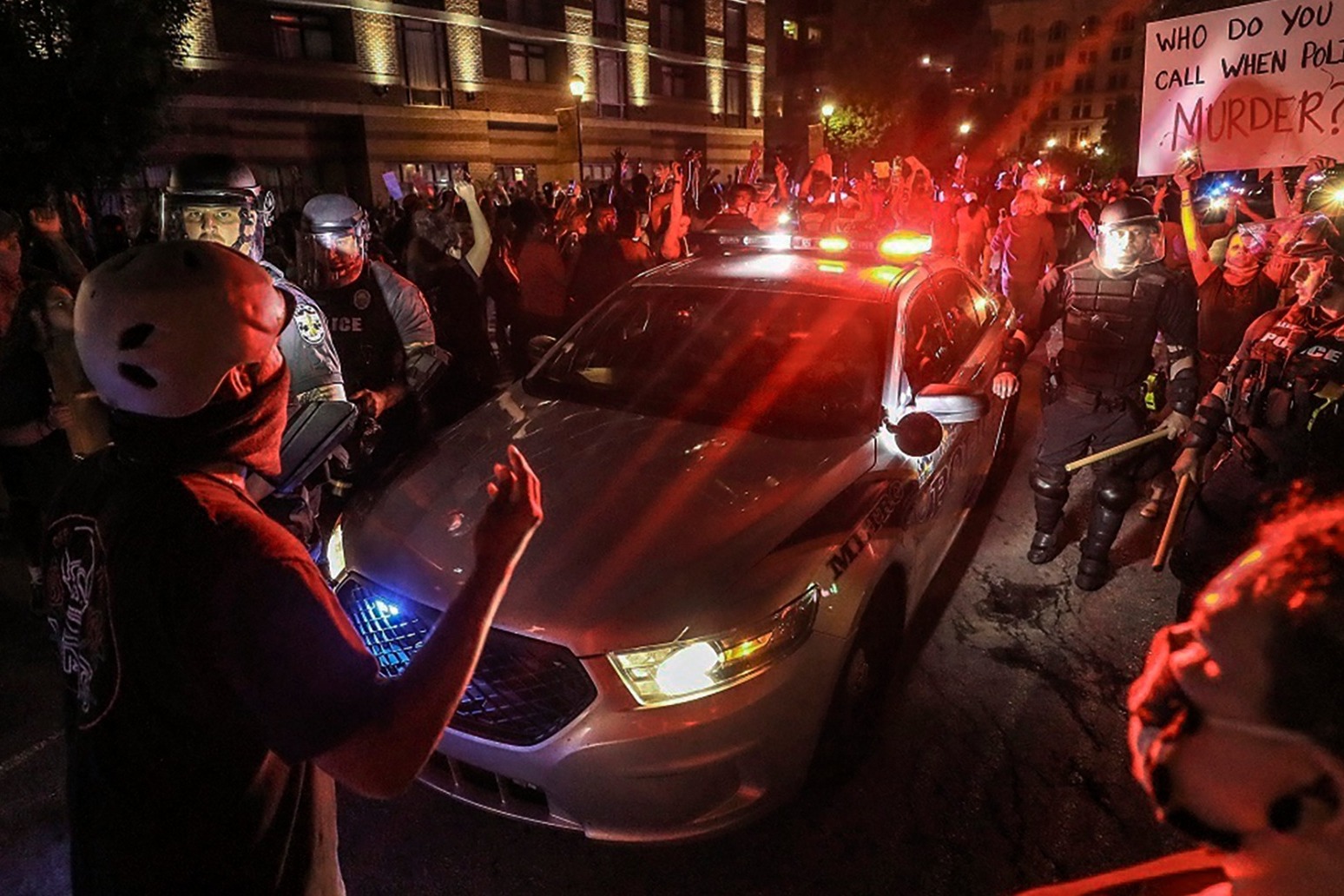
US endures night of protests
Violent protests over the death of George Floyd and other police killings of black people in the US grew on Saturday from New York to Tulsa to Los Angeles.
Police vehicles were set ablaze and injuries mounted as the country convulsed through another night of unrest after months of coronavirus lockdowns.
The protests – which began in Minneapolis following Mr Floyd’s death after a police officer held a knee to his neck until he stopped breathing – have left parts of that city a grid of broken windows, burned-out buildings and ransacked stores.
The unrest has since become a national phenomenon as protesters decry years of deaths at police hands.
More than 1,300 people have been arrested in 16 cities since Thursday, with more than 500 of those happening in Los Angeles on Friday.
Tens of thousands of people were in streets across the country on Saturday, many not wearing masks or observing social distancing, raising concerns about the potential spread of the coronavirus just as society is reopening.
After a tumultuous Friday night, racially diverse crowds took to the streets again for mostly peaceful demonstrations in dozens of cities from coast to coast. As on Friday, many protests descended into violence, with cars pushing into people in at least three cities.
— In Washington, the National Guard was deployed outside the White House, where chanting crowds were taunting Secret Service agents. Dressed in camouflage and holding shields, the troops stood in a line a few metres away, preventing the crowd from pushing forward.
— In Philadelphia, at least 13 officers were injured when peaceful protests turned violent and at least four police vehicles were set on fire, amid other fires downtown.
— In the Greenwood District of Tulsa, Oklahoma, the site of a 1921 massacre of black people that left as many as 300 dead, protesters blocked intersections and chanted the name of Terence Crutcher, a black man killed by a police officer in 2016.
— In Seattle, police fired tear gas and stun grenades to try to disperse black-clad crowds that smashed downtown shopfronts and stole merchandise.
— In Los Angeles, protesters chanted “Black Lives Matter,” some within inches of the face shields of officers. Police used batons to move the crowd back and fired rubber bullets, while a police car burned in the street.
— In New York City, dangerous confrontations flared repeatedly as officers made arrests and cleared streets. A video showed two NYPD cars lurching into a crowd of demonstrators who were pushing a barricade against one of them and pelting it with objects, knocking several people to the ground. It was unclear if anyone was hurt.
Minnesota Governor Tim Walz, who said local forces had been overwhelmed on Friday, fully mobilised the state’s National Guard and promised a massive show of force. The Guard announced it had more than 4,000 members responding to Minneapolis and would quickly have nearly 11,000.
“The situation in Minneapolis is no longer in any way about the murder of George Floyd,” Walz said. “It is about attacking civil society, instilling fear and disrupting our great cities.”
Soon after the city’s 8pm curfew went into force, lines of police cars and officers in riot gear moved in to confront protesters, firing tear gas to push away throngs of people.
The tougher tactics came after city and state leaders were criticised for not effectively confronting days of violent and damaging protests that included protesters burning down a police station soon after officers abandoned it.
President Donald Trump appeared to cheer on the tougher tactics being used by law enforcement on Saturday night. He commended the Guard deployment in Minneapolis, declaring “No games!” and also said police in New York City “must be allowed to do their job!”
Speaking in Cape Canaveral earlier, Mr Trump warned his administration would “stop mob violence, and we’ll stop it cold”.
“What we are now seeing on the streets of our cities has nothing to do with justice or with peace. The memory of George Floyd is being dishonoured by rioters, looters and anarchists,” he said.
“We can not and must not allow a small group of criminals and vandals to wreck our cities and lay waste to our communities.”
Earlier, Mr Trump issued tweets taunting protesters and praising the Secret Service, who used shields and pepper spray to push back people gathered outside the White House to protest Mr Floyd’s death and the president’s response.
Mr Trump tweeted he had watched from inside as officers “let the ‘protesters’ scream & rant as much as they wanted, but whenever someone …. got too frisky or out of line, they would quickly come down on them, hard – didn’t know what hit them”.
Overnight curfews were imposed in more than a dozen major cities nationwide, ranging from 6pm in parts of South Carolina to 10pm around Ohio.
People were also told to be off the streets of Atlanta, Denver, Los Angeles, Seattle and Minneapolis — where thousands had ignored the same order Friday night.
The officer who held his knee to Floyd’s neck as he begged for air was arrested Friday and charged with third-degree murder and second-degree manslaughter. But many protesters are demanding the arrests of the three other officers involved.
The events of the last 72 hours, seen live on national television, have shown the opposite: a sudden switch to shots of crowds, screaming protesters and burning buildings, coming in stark contrast to the empty streets of recent months during lockdown.
The unrest also recalled the Los Angeles riots of the 1990s after the acquittal of the white police officers who beat black motorist Rodney King.
The current protests have gripped many more cities, but the financial losses have yet to approach the totals Los Angeles suffered during five days of rioting in 1992, when more than 60 people died, 2,000-plus were injured and thousands arrested.
Published: by Radio NewsHub